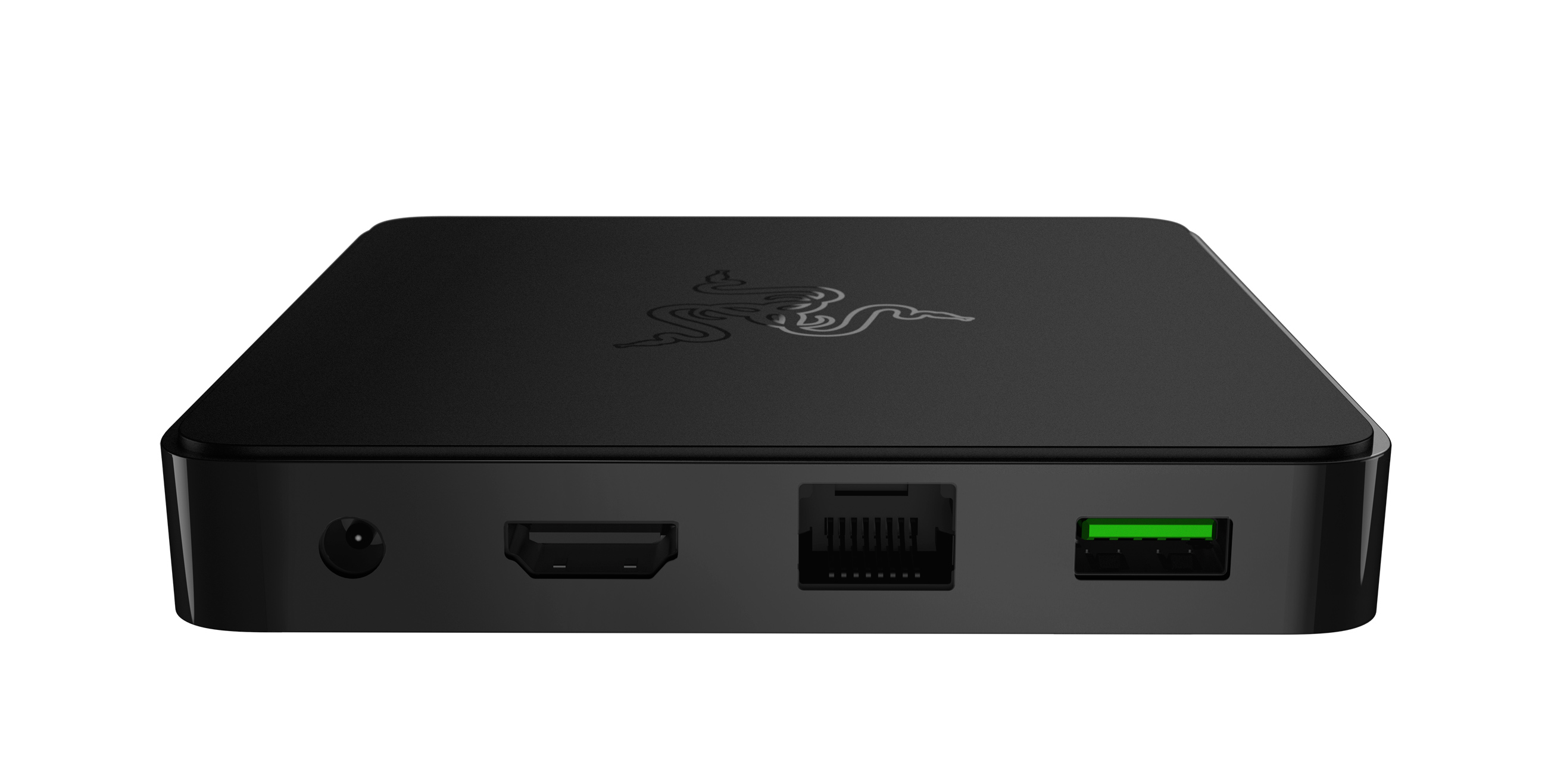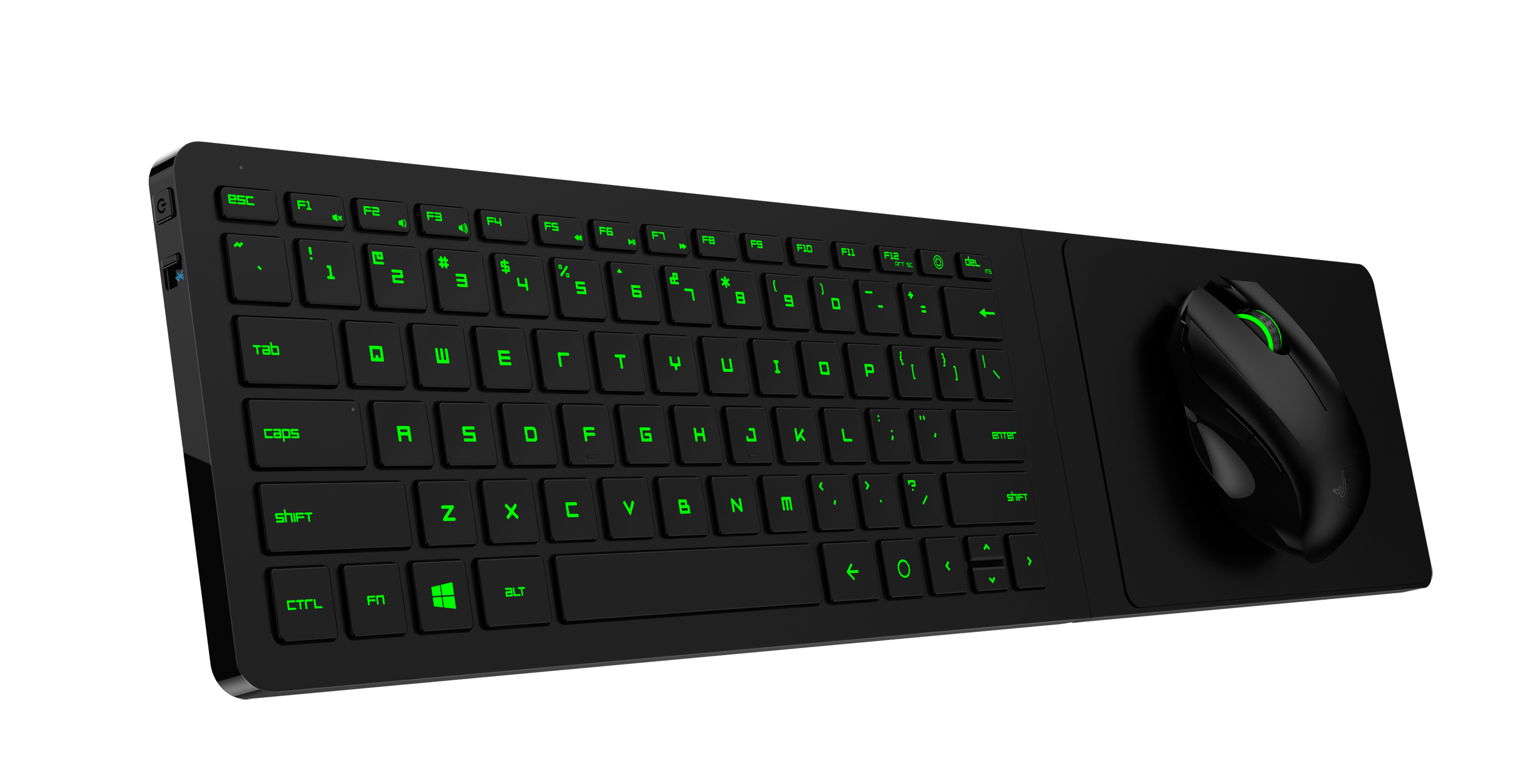Razer takes on living room streaming with Forge TV and Turret lapboard

Razer is joining Valve, Nvidia, and all the other companies betting big on streaming with a product called Forge TV, which it's showing off at this year's CES. We mostly know Razer as a hardware company, makers of mice and keyboards and other PC gear, but it's slowly been expanding its software presence with the cloud-based Synapse drivers for peripherals and Cortex, its game hub and launcher. And the Forge TV is hardware—it's a $100 streaming box for the living room that outputs at 1080p and 60 fps. But software is what makes it work. Razer claims that PC gamers who already have powerful PCs will be able to stream to the Forge TV, whether they have AMD or Nvidia graphics cards.
Like other game streaming solutions—namely Valve's Steam In-Home Streaming and Nvidia's GameStream—Razer's streaming software works by rendering a game on a host device (your existing rig), encoding that as a video stream with the help of the graphics card, sending that data over a local network to a client device (the $100 Forge TV), and decoding it with less powerful hardware. The Forge TV runs an Android OS on the Qualcomm Snapdragon 805 (the same SoC in the Samsung Galaxy S5), which has a quad-core Krait CPU clocked at 2.5GHz and an Adreno 420 GPU to do the heavy decoding work. The Forge TV has 16GB of internal storage, though you probably won't use much of that, since the entire point of the device is streaming from a more powerful PC.
Razer calls its streaming application Cortex: Stream, and it supports DX9 and newer games streamed at "ultra-low latency" at up to 1080p. Razer also claims Cortex: Stream "sets the streaming benchmark for frames per second." We don't know exactly what that means yet, but we asked Razer if Cortex would support 60 fps streaming and got confirmation that it would.
If all this sounds familiar to you, it should—it's essentially Steam's In-Home Streaming with Razer's own engineering work behind the video encoding. It could be better or worse than Valve's—the biggest difference is that it can stream to the Android-based Forge TV microconsole, rather than a Linux- or Windows-based living room Steam system. Since Cortex: Stream works on either AMD or Nvidia cards, it does have a compatibility advantage over Nvidia's proprietary streaming tech.
According to Razer, the Cortex: Stream software will support any Android 5.0 TV device, not just the Forge TV. To get people gaming in the living room, Razer is also launching a new Bluetooth controller called the Serval and a mouse and lapboard combo called the Razer Turret. The same engineers who built Razer's Xbox 360 controller worked on the Serval, and it looks just like an Xbox 360 controller—with the addition of a phone clip built into the top, if you want to play games on an Android smartphone instead of with the Forge TV. There's a $150 Forge TV and Serval controller bundle, but the controller is a pricy $80 standalone.

The Turret is a more interesting device. It's also expensive at $130, but it pairs a chiclet keyboard with a 3500 DPI mouse that stays on the lapboard's mousing surface with magnets. The Turret supports both Bluetooth and 2.4Ghz wireless connectivity. Razer promises months of battery life on the keyboard and up to 40 hours on the mouse (both are rechargeable) and the Turret folds up for living room storage. The mousing surface looks awfully cramped for gaming on, and who knows how that magnetized surface will feel. No one has done PC gaming in the living room well yet, so we're curious how well Razer does with its first stab.
The Forge TV will go on sale sometime in the first quarter of 2015, while the Turret mouse+keyboard will show up later in Q2. We'll be checking them out at CES this week to get some hands-on impressions.
The biggest gaming news, reviews and hardware deals
Keep up to date with the most important stories and the best deals, as picked by the PC Gamer team.

Wes has been covering games and hardware for more than 10 years, first at tech sites like The Wirecutter and Tested before joining the PC Gamer team in 2014. Wes plays a little bit of everything, but he'll always jump at the chance to cover emulation and Japanese games.
When he's not obsessively optimizing and re-optimizing a tangle of conveyor belts in Satisfactory (it's really becoming a problem), he's probably playing a 20-year-old Final Fantasy or some opaque ASCII roguelike. With a focus on writing and editing features, he seeks out personal stories and in-depth histories from the corners of PC gaming and its niche communities. 50% pizza by volume (deep dish, to be specific).

